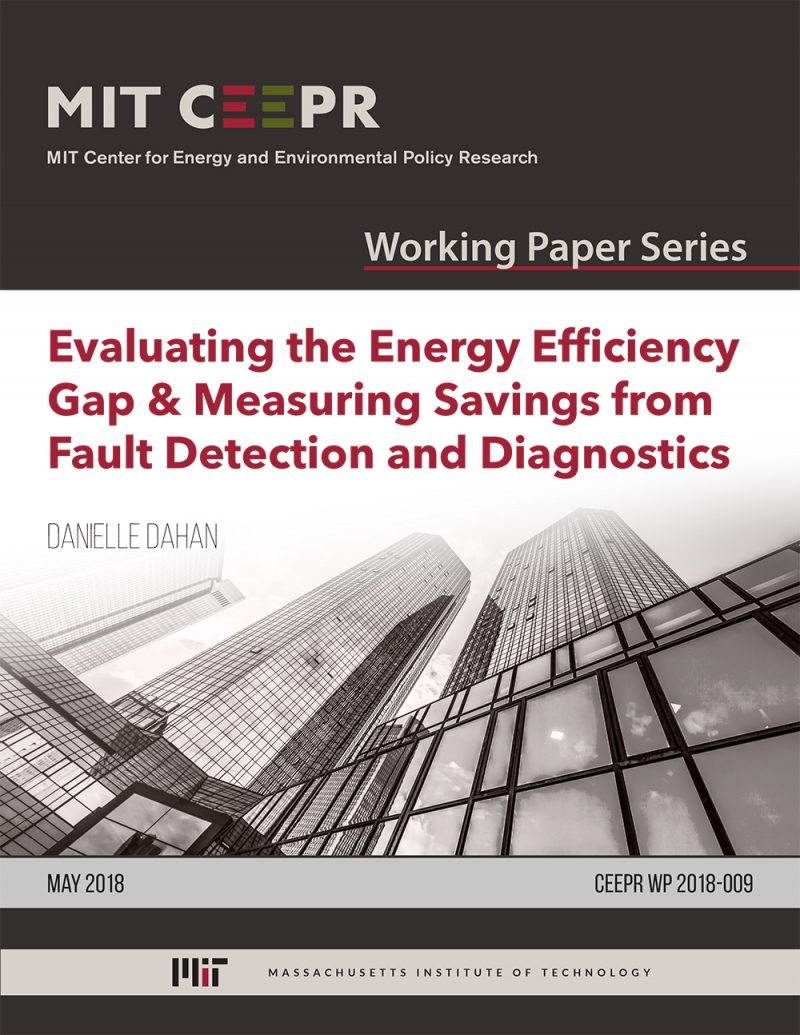Evaluating the Energy Efficiency Gap & Measuring Savings from Fault Detection Diagnostics
Danielle Dahan
May 2018
According to the International Energy Agency, energy efficiency programs make up 72% of global greenhouse gas abatement strategies. However, there is extensive literature that shows compelling evidence for an “energy efficiency gap” in which expected energy savings from energy efficiency programs are not realized. Due to the importance of energy efficiency in global climate mitigation, as well as the significant federal, state, and local budgets for energy efficiency, there is a clear need for further research in this domain to evaluate the energy efficiency gap and prioritize methods for reducing the gap. Further, there is significantly less research on the gap as it applies to commercial buildings; the majority of research does not take advantage of advancements in available statistical modeling techniques; and there is very limited research evaluating the gap as it applies to the new field of fault detection and diagnostics (FDD). With FDD, building owners are able to closely monitor on an ongoing basis any faults that begin to occur in a commercial building that can waste energy and lead to the gap in energy efficiency. However, there has been very little research evaluating these systems in real buildings and calculating the energy efficiency impact. This thesis proposes and tests a modeling approach using novel machine learning algorithms to estimate counterfactual energy usage in real buildings and calculate the energy efficiency savings associated with an existing FDD system.
In this thesis, I propose a modeling technique using novel machine learning algorithms to estimate counterfactual energy usage of commercial buildings. I take advantage of high-frequency 15-minute interval electricity, chilled water, and steam energy usage data over several years in four campus buildings. I then compare the accuracy of these models applied to brand-new data using three different machine learning modeling techniques, the Lasso Model, Ridge Regression, and an Elastic Net Model. Finally, I applied these models to 8 time periods in which the existing FDD system identified a fault, thus isolating the energy impact of the fault. With this approach, I found that each of the three modeling techniques outperformed the other two techniques in at least one of the models, indicating that there is likely a benefit from using three approaches in building energy modeling. Further, I found that the models are likely able to isolate the energy increase associated with these faults, with some models yielding a higher confidence level than others. In addition to the overall average increase in energy, the faults showed consistent results in the daily load profile shifts after the fault occurred. Overall, the faults yielded monthly energy cost increases of $800-$1600 each. This methodology could therefore be used in more buildings and with different types of fault detection diagnostics systems to better evaluate the benefits of FDD software across applications. By using this method more extensively, we can better inform policy that can in turn aim reduce the energy efficiency gap in commercial buildings.



